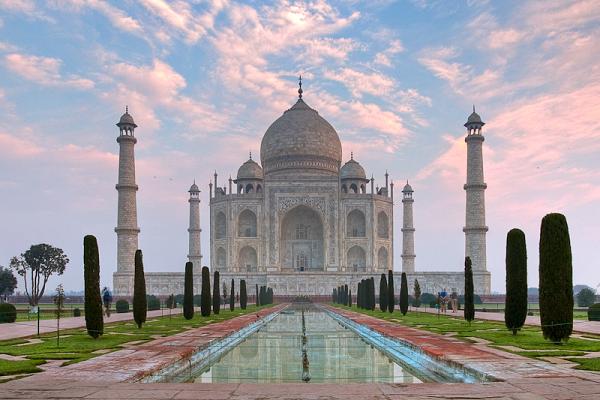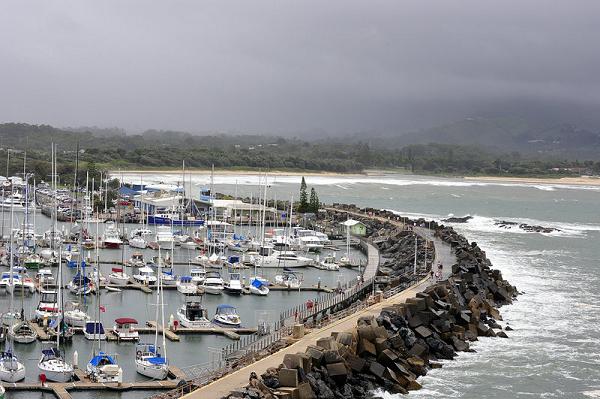All around the world there are many beautiful sites that are worth to see. Some of them are included in the list of UNESCO World Heritage Sites and other in the list of the New Seven Wonders of the Words. Others are not included in any list but anyway beautiful. Probably once admiring such sites it doesn’t come in mind how important are cleaning and maintenance programmes to keep alive their beauties and value. Researching for such information it is possible to discover which treatments monuments need and how professional experts do it. Below you will find some curiosities about five of the most popular, important and visited monuments all around the world.
Statue of Liberty, New York
One of the most visited monuments in the world, the Statue of Liberty is since ever the symbol for Freedom of the Big Apple city. In 2011 it registered 3.7 millions of visitors and counted with 174 millions of dollars and involved around 2,218 jobs. In 1865, after the American Civil War, Édouard de Laboulaye, an important French political thinker, had the idea. He wanted France to learn from the USA. Finally in 1875 the project started. The Statue of Liberty was built in France and then brought to USA by ship and in 1886 officially opened. In 1984 it was nominated an UNESCO World Heritage Site.
The Statue of Liberty gets continual maintenance and cleaning works with the aim to make the symbol of Freedom shines and protects the all city of New York. One of the biggest cleaning and restoration was in 1986 in occasion of its 100 anniversary. Another big maintenance work started last year to repair all damages from the very strong storm Sandy. Apparently they decided to use bicarbonate of soda to clean the copper surface due to the chance to get it clean without disintegrate the surface. Check out the video above where people are cleaning the Statue. Tourists and citizens are looking forward to the 4th of July, the Independence Day, when the monument will be open to the public again.
Eiffel Tower, Paris
Built in 1889 by the engineer Gustave Eiffel, from whom it took the name, the Eiffel Tower was not well welcome and was subjects of controversy and criticisms. For that reasons it was intended to last only 20 years. However it became soon an attraction for tourists and an ideal platform for transmission antennas useful for the new science of radio telegraphy. Nobody would have said that nowadays it is one of the most-visited paid monuments all around the world – it welcomes almost 7 million visitors per year. Since the 1980s regular renovation and maintenance works are done. The Eiffel Tower got clean every year and every seven years it is repainted by hand. You can have a look at this video to see a spring cleaning in 1946.
Big Ben, London
The Elizabeth Tower, the Great Clock and the Great Bell – also known as Big Ben – celebrated 150th anniversary in 2009. In this occasion the monuments, created by MMM, got one of the major programmes of maintenance. Even the bell’s hourly and quarter-hourly strikes were suspended for four to six weeks to allow experts doing the maintenance; this didn’t happen since 1956. There are also specialist glaziers that make external repairs to the clock’s glass-work. Repairing and maintenance works use to take place every 5 years. Speaking about cleaning works, in August of 2001 the Big Ben got a good week-long scrubbing after 6 years. Teams of cleaners cleaned the four faces of the clock from a height of almost 315 ft. Here you can have a look at a video of spring cleaning from 1980.
Colosseum, Rome
The Colosseum was nominated UNESCO World Heritage Site in 1980 and included in the New Seven Wonders of the World in 2007. It was started under the emperor Vespasian and completed by the son Titus in 80 AD. The opening ceremony lasted a hundred days of which there are descriptions in the ancient chronicles. Being such an old monument it requires many maintenance works, each of that costs a lot. For example, a maintenance work program of 25 millions of euro started in December 2012 and it will not end before than 2015. Aside from this head-to-toe restoration a hallway cleaning started last January: they are limited to a specific part of the arena and coast 80,000 Euros. During this works ancient traces of red, green, black and blue frescoes and graffiti came to light. This indicates that interiors, galleries and all transverse corridors of the arena were not grey-brown as we can see nowadays but more colorful. The last organic intervention was in 1939, after that the only big cleaning and restoration program was in 1970.
Taj Mahal, India
This mausoleum is based in Agra, North India and was built at the behest of Mughal emperor Shah Jahan in the memory of his third wife in 1632. Nowadays it is the mausoleum of both of them. In 1983 it became a UNESCO World Heritage Site and in 2007 was included in the New 7 Wonders of the World. Originally it is a white marble monument but pollution, fumes and lack of cleanliness let it become yellowish. Several methods have already been tried to remove stains and yellowing. One of the successful method was to use a fine clay, Multani Mitti, that needs to be mix in water and left for the necessary time before to wash it off with water. This method has already been used in 2001 and 2007. Moreover in 1988 the method had involved clay mixed with solvents.
Apparently, this method was already used in the 16th century. In fact in a manuscript from this time – the Ain-e-Akbari – it is possible to find a reference promoting this simple method of cleaning marble.


